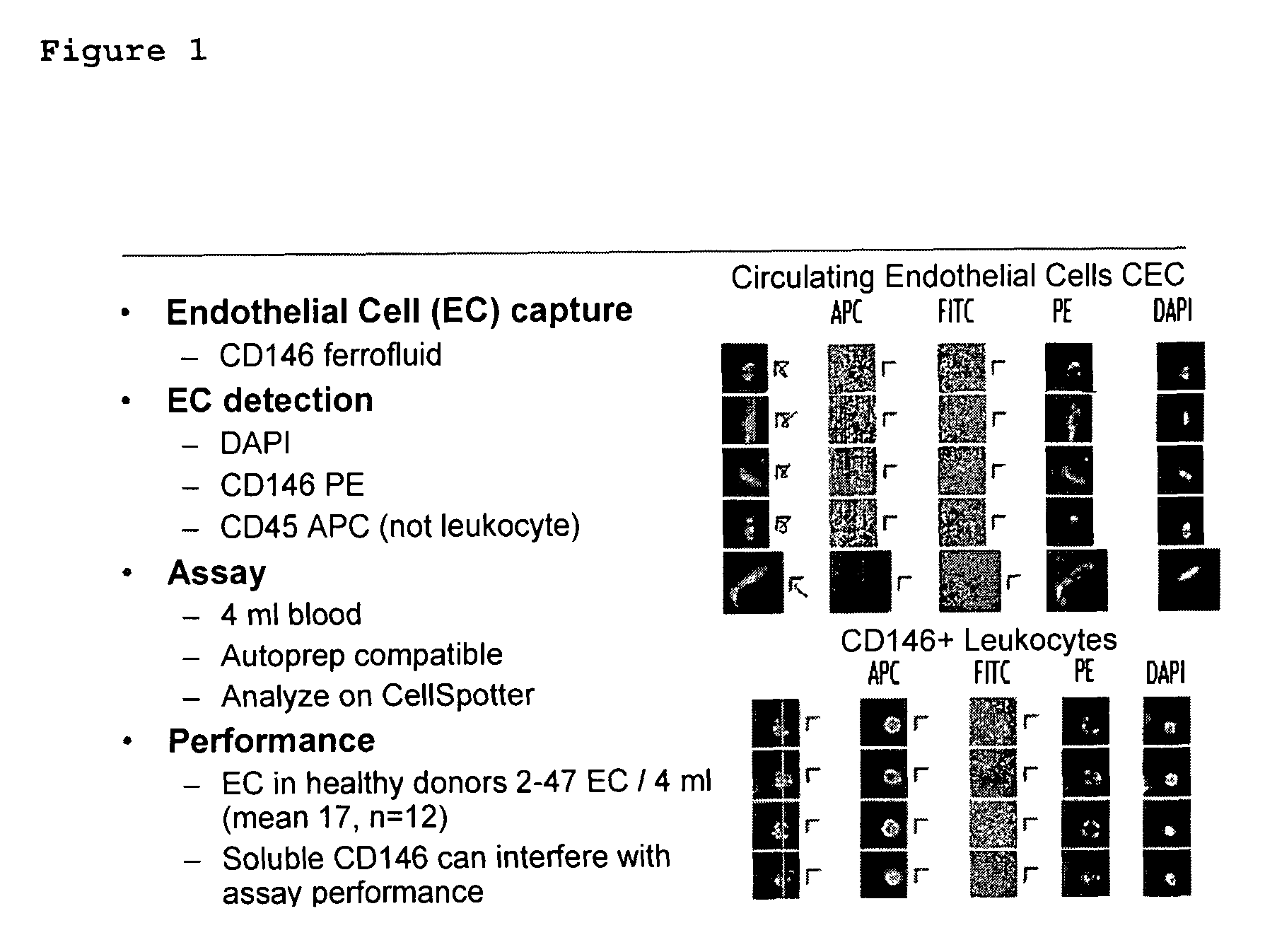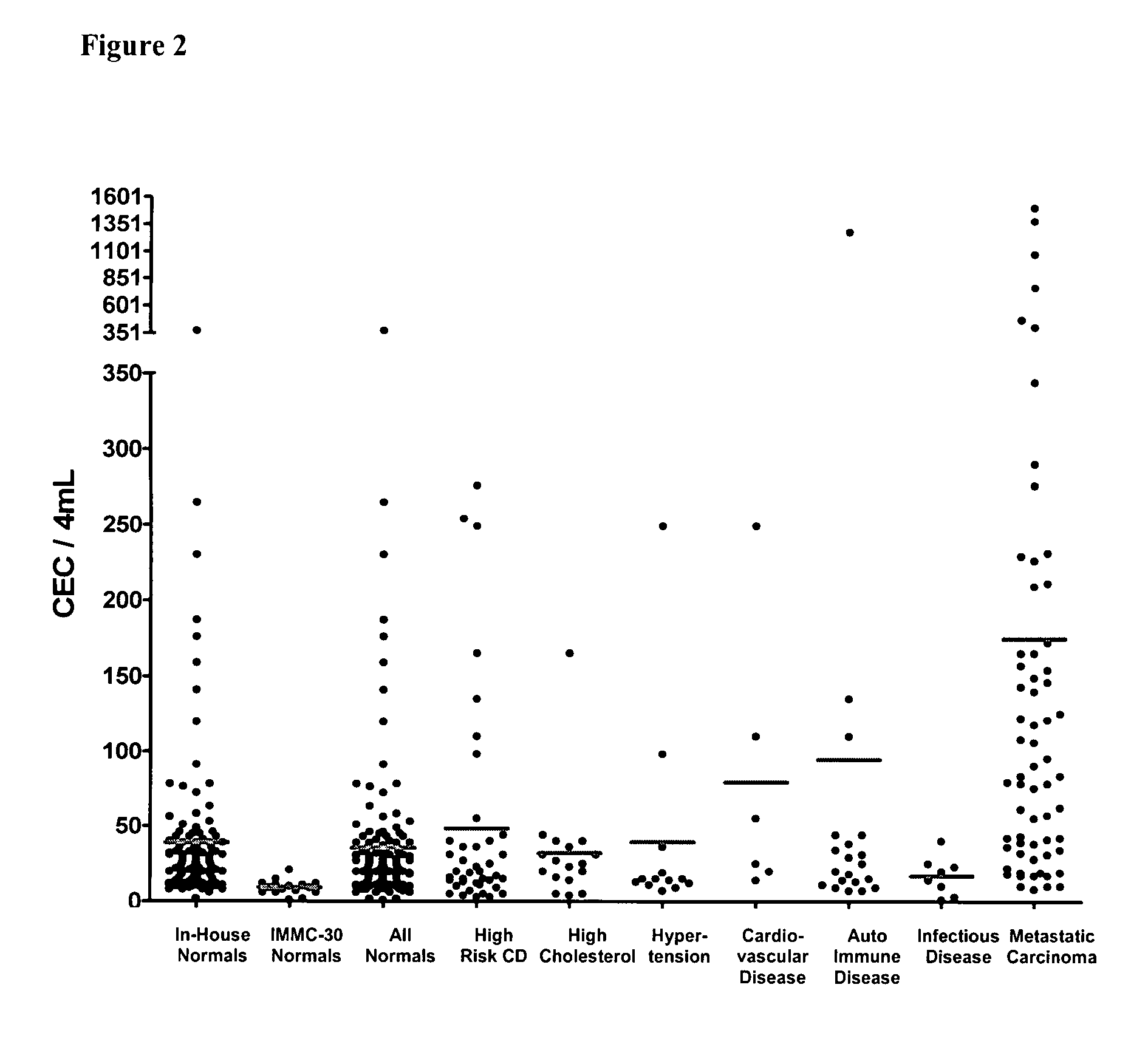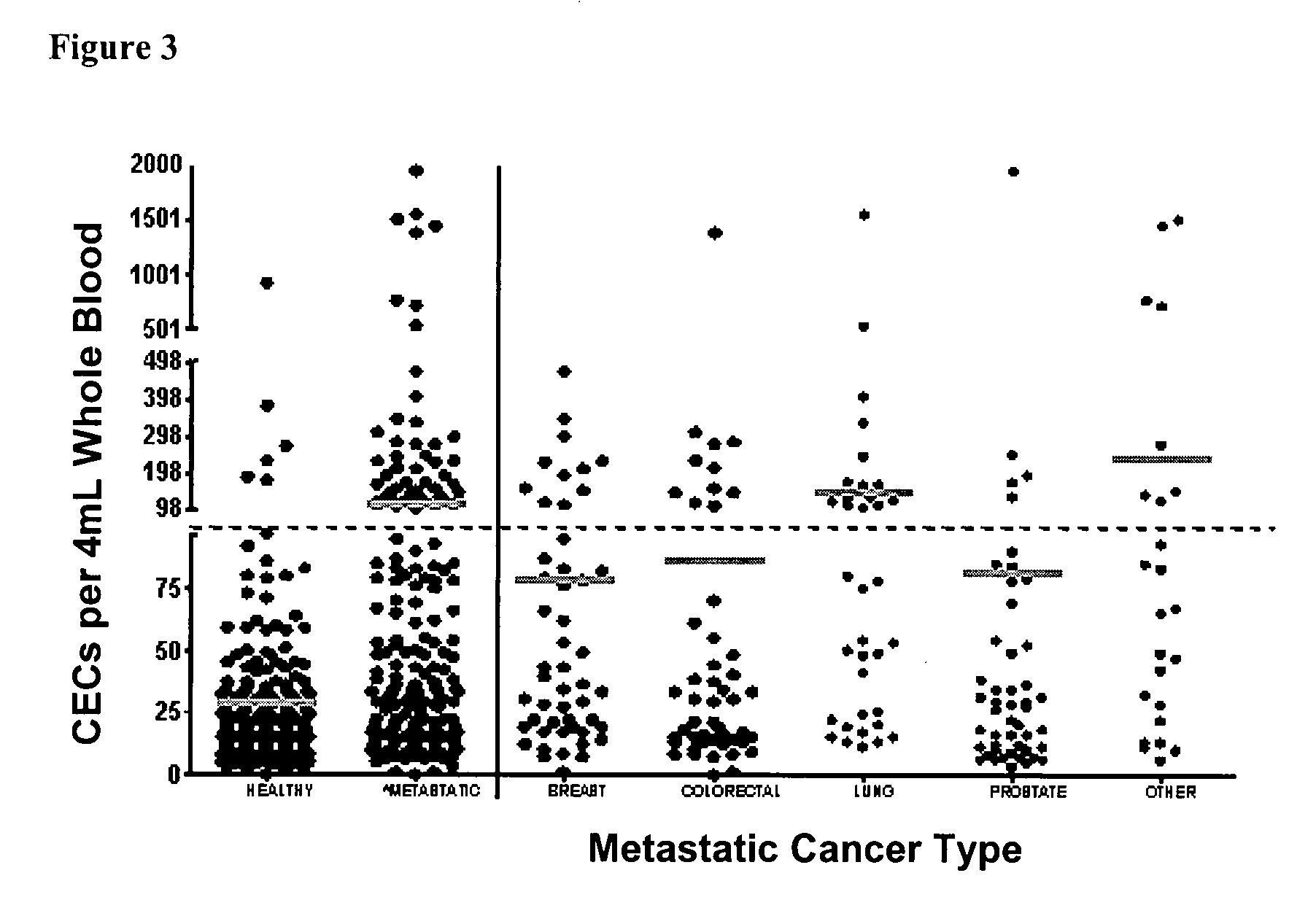Method for assessing disease states by profile analysis of isolated circulating endothelial cells
a technology of endothelial cells and profile analysis, which is applied in the field of cardiac disease, oncology and diagnostic testing, can solve the problems of difficult, if not impossible, interpretation and comparison of existing studies, and achieve the effects of reducing variation, assessing the efficacy of chemotherapeutic intervention strategies, and confident diagnostic and/or prognostic evaluation
- Summary
- Abstract
- Description
- Claims
- Application Information
AI Technical Summary
Benefits of technology
Problems solved by technology
Method used
Image
Examples
example 1
Semi-Automated Sample Preparation and Analysis for Identification of Circulating Tumor Cells
[0042]A semi-automated system was developed that processes and analyzes 7.5 ml of blood for the presence of epithelial derived tumor cells. Cells of epithelial cell origin are immunomagnetically labeled and separated from blood. The magnetically captured cells are differentially fluorescent labeled and placed in an analysis chamber. Four-color fluorescent imaging is used to differentiate between debris, hematopoeitic cells and circulating tumor cells (CTC) of epithelial origin. An algorithm is applied on the captured images to enumerate an internal control and identify all objects that potentially classify as tumor cell based on size and immunophenotype. Thumbnail images of each object are presented in a user interface from which the user can determine the presence of tumor cells. In processing the blood of normal donors the internal control showed consistent and reproducible results between ...
example 2
Circulating Endothelial Cell Assay
[0047]An endothelial cell capture assay using CD146 ferrofluid was utilized to detected circulating endothelial cells (FIG. 1). The endothelial cell detection incorporated DAPI (nuclear stain), CD146 PE, and CD45 APC (non leukocyte assessment). Immunomagnetic enrichment of 4 ml blood with the AutoPrcp AUTOPREP system, an immunomagnetic cell enrichment system, resulted in an enriched fraction that was subsequently analyzed on CELLSPOTTER imaging system. The results are shown in FIG. 1. Endothelial cells in healthy donors showed 2 to 47 endothelial cells per 4 ml of blood (mean 17, n=12).
example 3
Survey of the Frequency of CEC in Peripherial Blood
[0048]The integrity of the vascular endothelium is compromised by a variety of diseases and trauma, which may result in the release of luminal endothelial cells into the circulation. The isolation and enumeration of these circulating endothelial cells (CECs) provides insights into the nature of specific disease processes. Unfortunately, the frequency of CECs is low and current assay methods are laborious, complex and frequently lead to highly variable results. Hence, automation provides more consistent analytical results for clinical interpretation. The data in the present example are generated by such an automated system. To prevent degradation of endothelial cells, 4 mL of blood was drawn in CellSave Preservative Tubes. The blood was centrifuged and placed in the CELLTRACKS AUTOPREP System, an immunomagnetic cell enrichment system. This system immunomagnetically enriches cells expressing CD146 and immunofluorescently stains the en...
PUM
| Property | Measurement | Unit |
|---|---|---|
| size | aaaaa | aaaaa |
| particle size | aaaaa | aaaaa |
| diameter | aaaaa | aaaaa |
Abstract
Description
Claims
Application Information
 Login to View More
Login to View More - R&D
- Intellectual Property
- Life Sciences
- Materials
- Tech Scout
- Unparalleled Data Quality
- Higher Quality Content
- 60% Fewer Hallucinations
Browse by: Latest US Patents, China's latest patents, Technical Efficacy Thesaurus, Application Domain, Technology Topic, Popular Technical Reports.
© 2025 PatSnap. All rights reserved.Legal|Privacy policy|Modern Slavery Act Transparency Statement|Sitemap|About US| Contact US: help@patsnap.com



